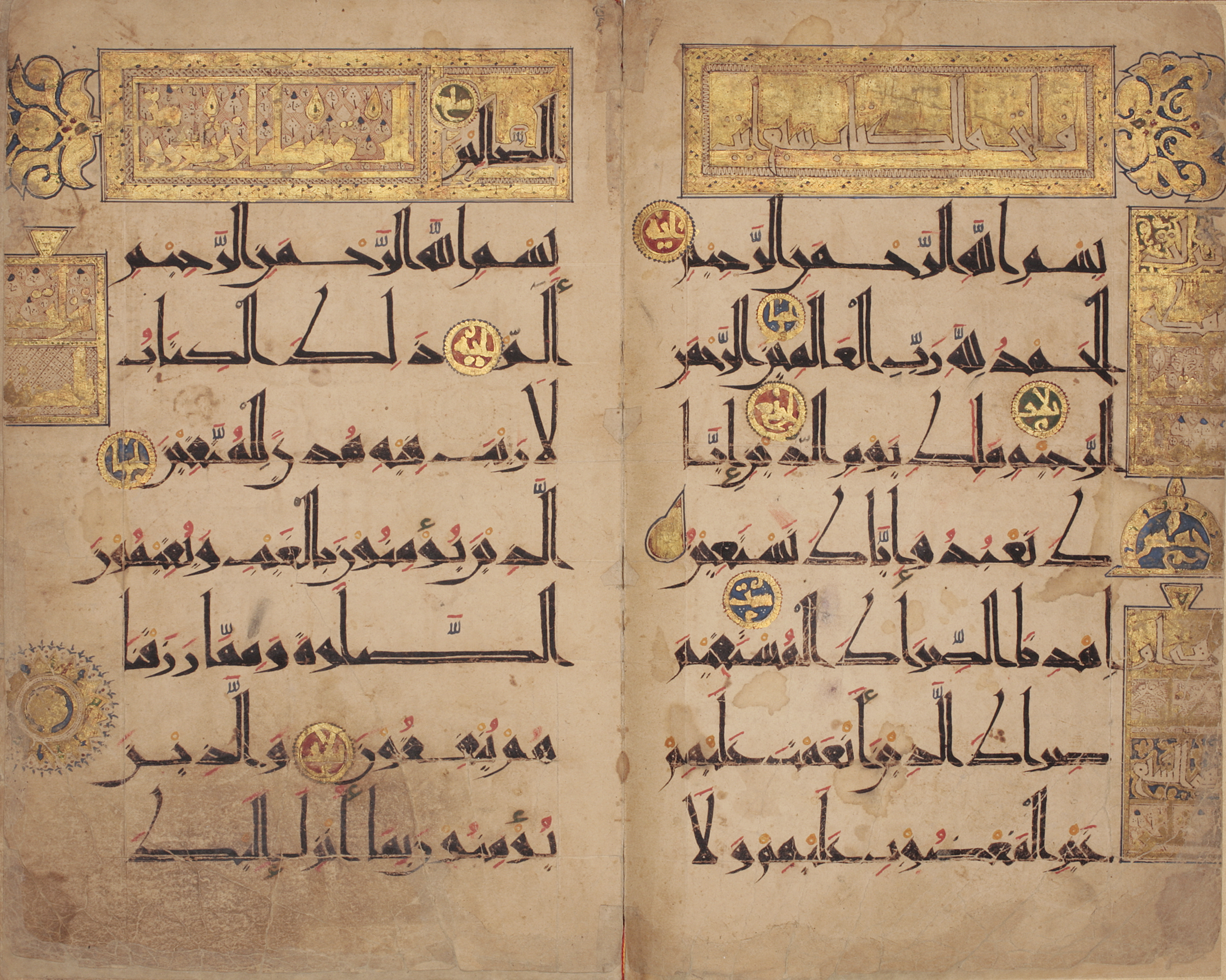 Print Page
Print Page
 Print Page
Print Page
Location: Iran
Materials: ink, gold and opaque watercolour on thick paper
Dimensions: 122 folios; 36.5 x 23.8cm
Accession Number: QUR 89
Other Notes:
These folios once belonged to the first, sixth and seventh parts of a seven-part Qur’an that was clearly an impressive, richly illuminated manuscript. The available evidence suggests that each part had a double-page frontispiece and finispiece. The surviving half of the frontispiece (folio 1a) is part of a statistical table of the components of the Qur’an: words, letters, diacritical points and so on. The first pages of the text (fols 1b–2a) with surah al-Fatihah (I) and the beginning of surah al-Baqarah (II), written so that the last word of al-Fatihah appears on the following page, have the titles in plainer Kufic in illuminated rectangular panels with hasps. Other rectangular panels and cartouches contain information on the two surahs and their place in the Qur’an. The next fully illuminated page is at the end of Part six (fols 15b–16a). Surah titles and verse counts are written in gold within decorative bands accompanied by marginal vignettes.
The script is remarkable for its size, each line being roughly 4cm in height.
Script:
copied in Kufic script; 8 lines to the page
Bibliography:
F. Déroche, The Abbasid Tradition, The Nasser D. Khalili Collection of Islamic Art, vol. I, London 1992, cat.84, pp.156–65.
J.M. Rogers, The Arts of Islam. Masterpieces from the Khalili Collection, London 2010, cat.58, p.70.





